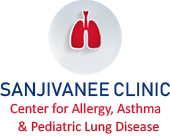Tuberculosis (TB) remains a significant global health concern, a persistent infectious disease primarily targeting the lungs but capable of affecting other organs. Despite considerable medical advancements, TB continues to pose a challenge to public health worldwide. This guide offers a thorough yet accessible overview of tuberculosis, exploring its causes, symptoms, diagnosis, treatment strategies, and preventive measures.
What is Tuberculosis?
Tuberculosis is a condition caused by the bacterium Mycobacterium tuberculosis. TB is not to be confused with other conditions known as respiratory diseases like cold or flu. Contrasting with these, TB cannot spread easily and needs prolonged close contact with the infected person.
The method through which transmission occurs includes: air when an infected individual is coughing, sneezing, speaking, singing, or laughing through dropping microscopic droplets which are laden with the bacterium.
These droplets can be inhaled by others, leading to infection. It’s important to distinguish between two TB-related conditions: latent TB infection and active TB disease.
Latent TB Infection (LTBI) vs. Active TB Disease
Latent TB Infection: In latent TB infection, the bacteria live in a resting state in the body. People infected with latent TB infection are asymptomatic and not infectious. The bacteria can reactivate and evolve to active TB disease, especially among those with weakened immunity.
Active TB Disease: Active TB disease means that the bacteria are actively multiplying and causing symptoms. This stage is infectious and requires immediate medical attention.
How Tuberculosis Spreads:
TB is an airborne infection, which spreads from one person to another by inhaling airborne droplets containing the bacteria. The risk of transmission increases with close contact with an individual suffering from active pulmonary or laryngeal TB.
Perception of signs and symptoms of TB:
It depends on the organ with which TB occurs. Since the most common form, pulmonary or lung TB appears first, its symptomatology primarily has;
- Persistent cough for longer time and at least for three consecutive weeks
- Chest Pain.
- Coughing Blood or Sputum;
- Unwarranted tiredness
- Lifting of unwanted weight,
- Loss of appetite and,
- Feeling of Chill, sometimes incoherent fever
- Night sweats
- Extrapulmonary Tuberculosis
If TB attacks organs outside the lungs, then it is called extrapulmonary TB. Depending on the specific organ that’s infected, symptoms will vary. Spinal TB can cause back pains, renal TB can give one blood in urine, TB Meningitis can bring on headaches, confusion and stiffness of the neck and Lymph Node TB may present with swollen lymph nodes in the neck.
Spinal TB: Back pain
Renal TB: Blood in the urine
TB Meningitis: Headaches, confusion, and neck stiffness
Lymph Node TB: Swollen lymph nodes, often in the neck
Diagnosis of Tuberculosis
TB diagnosis requires correct and prompt diagnosis. Methods used to diagnose TB include:
Tuberculin Skin Test (TST) (Mantoux Test): This test detects latent TB infection. A small amount of tuberculin is injected under the skin. A raised bump at the injection site after 48-72 hours indicates a possible TB infection.
Interferon-Gamma Release Assays (IGRAs): These blood tests measure the immune response to TB bacteria. IGRAs are helpful in diagnosing LTBI and are not influenced by prior BCG vaccination.
Chest X-Ray: This imaging technique can show lung abnormalities which are suggestive of TB disease, especially when the TST or IGRA is positive.
Sputum Smear and Culture: It can detect the presence of TB bacteria from sputum samples, which helps in knowing whether the TB bacteria are susceptible to antibiotics.
Molecular Diagnostic Tests: The rapid molecular tests, including Xpert MTB/RIF, can quickly detect TB DNA and identify resistance to rifampicin, a major drug used to treat TB.
Treatment Options for Tuberculosis
- LTBI Treatment:
Treatment for LTBI is aimed at preventing progression to active disease. Common drugs include isoniazid, rifapentine, or rifampin, which are administered over a period of several months.
2. Active TB Disease Treatment:
Active TB disease is treated by using a combination of antibiotics, which usually lasts six to nine months. First-line standard treatment is made up of isoniazid, rifampin, ethambutol, and pyrazinamide. Completing the entire treatment course is important in eliminating the bacteria and avoiding drug resistance.
3. Drug-Resistant Tuberculosis:
Drug-resistant TB, including multidrug-resistant TB (MDR-TB) and extensively drug-resistant TB (XDR-TB), is highly challenging. These types of TB are resistant to one or more of the first-line TB drugs, with longer treatment periods using toxic second-line drugs.
Preventing Tuberculosis
Prevention measures range from vaccination, infection control, public health measures to individual efforts:
Vaccination:
The Bacillus Calmette-Guérin (BCG) vaccine is widely used in many countries to prevent severe forms of childhood TB. It does not provide a reliable level of immunity to pulmonary TB in adults, though.
Infection Control:
TB infection control measures in the health care setting are vital for preventing the spread of the disease. These include respiratory protection, including masks, adequate ventilation, isolation of patients with active TB, and other similar practices.
Public Health Initiatives:
Public health programs work toward the following:
- Early diagnosis and treatment of TB cases
- Contact tracing to identify and test the exposed.
- Public education campaigns to create awareness on TB and the need for early detection.
- Individual Preventive Measures
- Avoid close contact with individuals with active TB.
- Practice good respiratory hygiene by covering coughs and sneezes.
- Seek early medical attention when TB symptoms are suspected.
- Complete the full course of TB treatment if diagnosed.
Global Burden of Tuberculosis
TB still is the most significant contributor to global deaths. Low- and middle-income nations are disproportionately affected by this disease. The COVID-19 pandemic has, in its wake, burdened TB control even further.
TB and HIV Coinfection:
TB is also a main cause of deaths among persons with HIV mainly because the immunity is derailed. TB services should be integrated with HIV.
Drug-Resistant TB (MDR-TB and XDR-TB):
Drug resistance is a major threat to TB control and often demands long, complicated treatment courses.
Future Prospects in TB Control:
Research continues in these areas:
- Diagnostic innovations
- Shorter treatment duration
- Vaccines with enhanced efficacy
- Digital health innovations to enhance TB care
- Takeaway Messages
- Understand the difference between LTBI and active TB.
- Identify symptoms of TB and consult a physician.
- Stick to your TB treatment.
- Support public health efforts to control TB.
Increased awareness and promotion of preventive measures will help us to contribute to the elimination of tuberculosis in the world.

